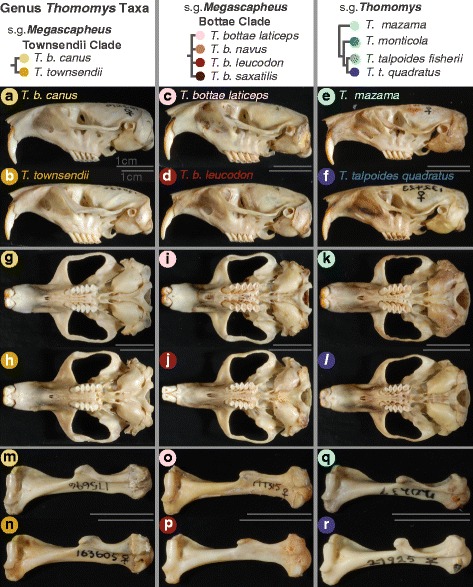Fig. 7.

Comparisons of claw-digging to tooth-digging taxa in each major clade. Representatives of claw-digging and of tooth-digging, respectively taxa in each major taxonomic clade. Lines on the right of each image give 1 cm scale for each specimen. Lateral cranial views of T. M. Townsendii clade gophers, T. (M.) b. canus, a claw-digging gopher found in heavy but friable soils (see also Table 4) a versus its sister taxa T. (M.) townsendii, a tooth-digging species also found in heavy but friable soils b. Lateral cranial views of T. M. Bottae clade gophers, T. (M.) bottae laticeps, a claw-digging taxa found in friable clay soils c versus its tooth-digging sister subspecies, T. (M.) bottae leucodon, one of the most procumbent taxa in the genus d. Lateral cranial view of subgenus Thomomys gophers, T. (T.) mazama, representing the most ancestral claw-digging condition in very soft soils e versus its sister taxon, T (T.) talpoides quadratus, which tooth-digs in some of the hardest soils in the region f. Ventral cranial views for the same taxa g–l. Anterior humeri views for the same taxa m–r
